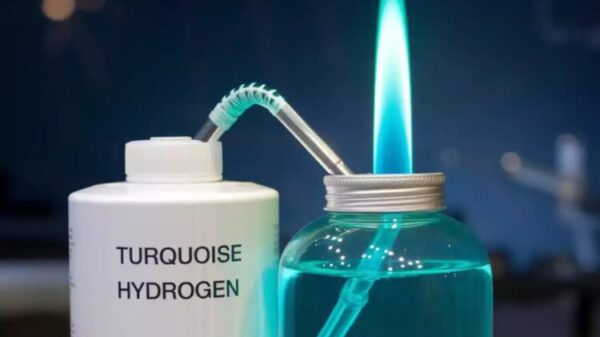The energy landscape is shifting as Europe emerges as a global leader in the production of turquoise hydrogen, with an output of 150,000 tons annually. This innovative hydrogen form is produced through methane pyrolysis, a process that generates hydrogen gas and solid carbon without the emissions associated with traditional hydrogen production. The United States, primarily reliant on gray hydrogen—which is the least environmentally friendly—faces significant challenges as Europe accelerates its move towards cleaner energy solutions.
The Rise of Turquoise Hydrogen in Europe
Turquoise hydrogen represents a breakthrough in the pursuit of sustainable energy. It offers a cleaner alternative by eliminating carbon dioxide emissions during production. The process of methane pyrolysis not only produces hydrogen but also solid carbon, making it a more efficient and environmentally friendly option compared to existing methods such as green or gray hydrogen.
The energy transition in Europe is driven by a commitment to reduce greenhouse gas emissions and promote sustainability. In contrast to green hydrogen, which is derived from water and requires renewable energy for electrolysis, turquoise hydrogen is less expensive to produce. Methane pyrolysis costs only about 13% of the price associated with green hydrogen production, allowing for quicker and more cost-effective scaling.
Moreover, the conversion of turquoise hydrogen into methanol enhances its appeal. Methanol is easier to transport and handle than pure hydrogen, making it an attractive commodity for export. This positions Europe as a leader in the hydrogen value chain, controlling production and trade while offering a cleaner energy source to global markets.
One notable example of this burgeoning industry is Finnish company Hycamite, which is constructing a plant in Kokkola with the capacity to produce 2,000 tons of hydrogen and 6,000 tons of solid carbon annually. This project exemplifies the potential for turquoise hydrogen to reshape energy production in Europe.
Challenges for the United States
The United States currently lags behind in the hydrogen race, predominantly relying on gray hydrogen produced from natural gas without carbon capture, resulting in significant CO2 emissions. This reliance positions the U.S. at a disadvantage as Europe forges ahead with cleaner, more efficient energy solutions.
The challenge for the U.S. lies not only in enhancing its hydrogen production methods but also in establishing a robust infrastructure that can adapt to new energy technologies. As Europe expands its capabilities, the United States must innovate to maintain its standing in the global energy sector.
Energy production is increasingly viewed as a strategic asset, and the competition between Europe and the United States will determine who leads the market for the next generation of cleaner energy. The ability of U.S. policymakers and industries to adapt to these changes will be critical in shaping the future of hydrogen production and the broader energy landscape.
As the focus shifts towards sustainable energy, the emergence of turquoise hydrogen underscores the need for countries to invest in innovative solutions that promote environmental stewardship while meeting energy demands. The outcome of this energy transition will have lasting implications for both Europe and the United States in the global market.








































































